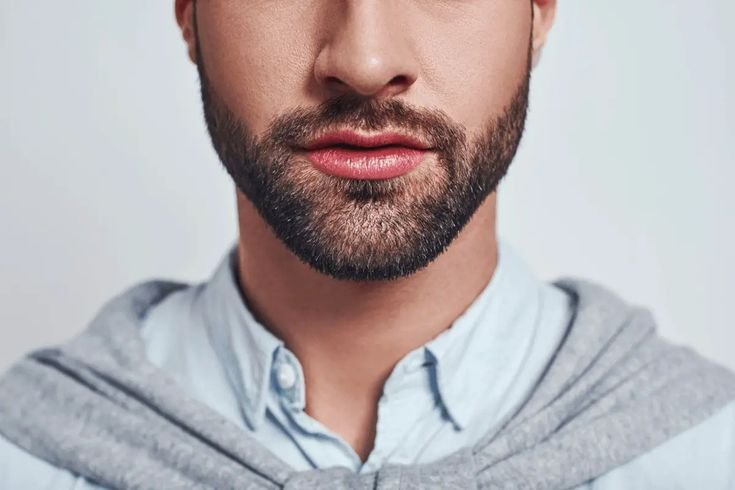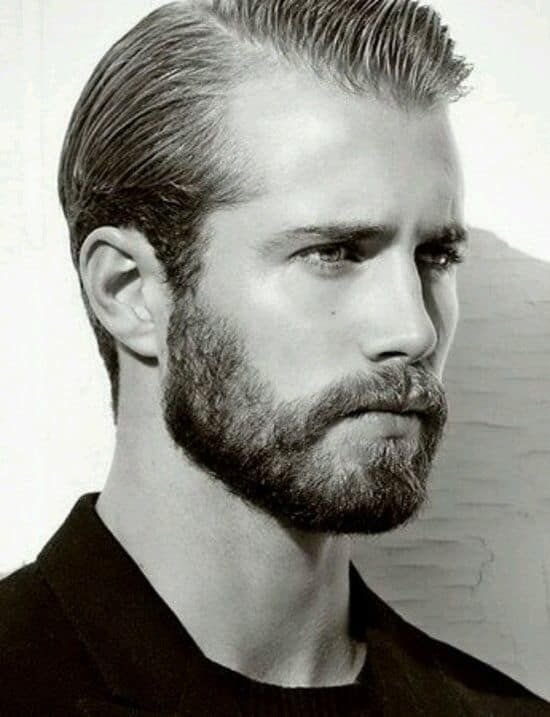Brazilian waxing has gained immense popularity over the years as a preferred method for achieving smooth, hair-free skin in intimate areas. But what exactly is this Brazilian wax?
In this extensive blog post, we will delve into the world of Brazilian waxing – from its process to its advantages and aftercare. This article is all you need if you are contemplating having a Brazilian waxing done for the first time or if you have been doing it for years.
Understanding Brazilian Waxing
An approach that employs warmth wax to eliminate hairs on the pubic region is described as Brazilian waxing. In contrast with standard bikini waxing which isolates the sides of the bikini line removing hair from there, Brazilian wax does this for a whole pubic area including the front part as well as the rear end and everything between these two points. This procedure gives rise to completely hairless and smooth skin thus becoming one of the favorite methods among people seeking neatness and tidiness.
Brazilian (Front): What to Expect
Brazilian (Front) wax concentrates on removing hair from the anterior parts of the pubic region. This encompasses the pubic mount hair as well as the labial hairs. Initially, warm wax is applied to the desired area. After that, [it] is swiftly lifted off, dragging along some strands of hair from their roots. Nonetheless, this technique works efficiently in eliminating even the roughest and shortest hairs at once rendering skin devoid of any kind of fuzz.
During the Brazilian (Front) waxing process patient needs to communicate his/her feelings towards discomfort about an aesthetician in charge. Even though it could result in slight pain, especially during the first attempt the benefits outweigh all these discomforts. The smoothness you get after doing a Brazilian lasts between three to six weeks based on your rate of growing new strands.
Choosing the Right Wax for Your Brazilian Waxing Session
Choosing the right kind of wax can make a huge impact on both your experience and the outcomes of a session. Essentially, there are two types of waxes; hard and soft ones. Often, when it comes to certain sensitive parts like the pubic area, hard wax is recommended since it only sticks to hair not skin thereby reducing pain during the removal process. In contrast, soft wax has to be thinly applied on larger surfaces and then raked off with a cloth strip. Talking about this matter with your esthetician will help you in identifying skin type and preference concerning the best waxes for your session; as a result, provide a cleaner and easier process or involvement.
Brazilian (Back): The Process and Benefits
Brazilian wax which is sometimes called “backside” or “butt strip” wax mostly concentrates on the removal of hair in the perianal region. This area of our body is quite hard to reach as well as shave thereby making it waxing ideal. The procedure is comparable with Brazilian front wax where warm wax is placed on the designated area and pulled out immediately thereby uprooting hairs.
There are numerous advantages associated with Brazilian (Back) Waxes since they make one’s skin smooth and devoid of hair. Additionally, they minimize skin irritations and prevent razor bumps that pop up after shaving so often. Most people believe that consistent use saves their time because Brazilian waxing lasts longer than shaving thus helping maintain a look that is always clean and smart.
The Full Brazilian Wax Experience
The combination of both waxes Brazilian (front) and Brazilian (back) is what comprises a full Brazilian wax which makes the entire pubic region smooth and without hair. For those who like the complete eradication of hair, this form of Brazilian waxing is the best as it offers the most extensive services. The full Brazilian wax can be personalized based on individual preference so that one may remove all hairs or leave some small lines in front or triangle shape.
Usually, it takes around 30 to 45 minutes depending on how long and thick one’s hair might be. Before your appointment day, you need to have your hair at least one-quarter inch long so that when wax is applied can firmly hold onto and pull it away from the skin safely.
Pre-Waxing Preparation and Aftercare
Executing some fundamental actions is essential when preparing for a Brazilian wax. First of all, ensure that your hair is sufficiently lengthy so that wax may grip on it—approximately one-fourth of an inch is ideal. Avoid shaving or trimming the hair too short before your appointment. Moreover, it’s a wise decision to exfoliate the area very gently a day earlier than you do waxing to eliminate dead skin cells and help in moving away from ingrown hairs.
Aftercare is paramount if you want to achieve optimal results from your Brazilian wax. In this case, after waxing, it’s advisable to stay away from hot baths, steam rooms, and tight clothes for not less than one day to facilitate the skin healing process. To soothe irritation and redness, you can apply a calming lotion or aloe vera gel. Exfoliation of this region is also recommended regularly as it helps prevent ingrown hairs while making sure the skin remains smooth.
Common Myths About Brazilian Waxing
A few misconceptions about Brazilian waxing are what mislead some people from trying it out. Here are some common myths that need to be debunked:
Myth: Brazilian waxing is only for women.
Fact: Brazilian waxing is popular among both men and women. It’s a personal preference and is suitable for anyone looking for a smooth, hair-free result.
Myth: Waxing causes hair to grow back thicker.
Fact: Waxing causes hair to grow back finer and softer over time, not thicker.
Myth: You should take a painkiller before waxing.
Fact: It’s not necessary to take painkillers before waxing. Communicate with your esthetician about your pain tolerance, and they can adjust the process to make you more comfortable.
Myth: You should avoid waxing if you have sensitive skin.
Fact: While those with sensitive skin may experience more redness or irritation, using proper aftercare and choosing a gentle waxing method can minimize discomfort.
Experience Professional Brazilian Waxing at Chicago Male Salon
To achieve a smooth, polished look like that of Brazilian waxing, it is necessary to find a reputable and professional salon. We at Chicago Male Salon know how reliable it is to seek expert care in intimate grooming services. Each one of our trained estheticians provides expert Brazilian waxing that meets individual needs, whilst also being comfortable and effective. Whether you are new to waxing or have been doing this for years, we promise a neat, safe, and welcoming environment where you will feel at ease always.
Check out our different grooming services and notice the difference at Chicago Male Salon where we combine skills and personal touch to make you look better as well as feel better. Our hygienic practices alongside precision make it possible for every client who gets serviced by us to leave happy with good self-esteem. Only highly recommended products are used by us to reduce pain levels during the procedure and for better results afterward. At Chicago Male Salon we promise an exceptional Brazilian waxing experience regardless of quality or any other factor affecting customer satisfaction.
FAQs
How painful is a Brazilian wax?
A Brazilian wax can be quite uncomfortable, particularly during your first session, as the hair is being removed from a sensitive area. However, the pain tends to lessen with each subsequent waxing because the hair grows back finer and less densely. The level of discomfort varies from person to person, depending on individual pain tolerance. Many people find the pain manageable, especially when compared to other hair removal methods. To minimize discomfort, taking a pain reliever before your appointment and practicing deep breathing during the process can be helpful.
How long does a Brazilian wax last?
The results of a Brazilian wax typically last between three to six weeks, depending on your hair growth cycle and how quickly your hair tends to grow back. After repeated waxing sessions, many people notice that their hair grows back finer and softer, which can extend the time between appointments. Factors such as hormones, genetics, and the season can also affect the longevity of your wax. To maintain smooth results, it’s recommended to schedule regular waxing sessions approximately every four to five weeks.
Can I get a Brazilian wax if I’m pregnant?
Yes, it is generally safe to get a Brazilian wax during pregnancy, although you might find the experience slightly more uncomfortable due to increased skin sensitivity. Hormonal changes can make your skin more prone to irritation, so it’s important to inform your esthetician that you’re pregnant. They can adjust their techniques to be gentler and ensure your comfort during the process. Some salons also offer specialized pregnancy waxing services. As with any beauty treatment during pregnancy, it’s always a good idea to consult with your healthcare provider beforehand.
How should I prepare for my first Brazilian wax?
To prepare for your first Brazilian wax, make sure your hair is at least a quarter of an inch long, which is typically about three to four weeks of growth. This length allows the wax to grip the hair effectively. The day before your appointment, gently exfoliate the area to remove dead skin cells and help prevent ingrown hairs. On the day of your wax, avoid applying any lotions, oils, or creams, as they can interfere with the wax’s ability to adhere to the hair. Wearing loose-fitting clothing to your appointment can help reduce post-waxing irritation.
What should I do if I experience ingrown hairs after a Brazilian wax?
Ingrown hairs can be a common occurrence after a Brazilian wax, but they can be minimized with proper aftercare. Regular exfoliation, starting 48 hours after your wax, can help prevent ingrown hairs by keeping the hair follicles clear of dead skin cells. Moisturizing the area daily will also keep your skin soft and supple, reducing the likelihood of hair becoming trapped beneath the skin. If you do notice ingrown hairs, resist the urge to pick at them. Instead, use a gentle exfoliating scrub or an ingrown hair treatment to encourage the hair to emerge naturally.
Conclusion
It is a really popular and effective method that helps one to achieve smooth and hair-free skin in intimate areas, which makes a Brazilian wax very desirable. The choices include Brazilian (Front), Brazilian (Back), or full Brazilian wax; all these options lead to everlasting outcomes that guarantee the user a sleeker and more polished feel on their skin. With proper preparation and aftercare, the effects of Brazilian waxing can be felt for weeks at a time.
Those who are new to this procedure should speak with an esthetician about their level of comfort and any concerns they might have. Though it can be a bit uncomfortable during its execution, this procedure always yields amazing results.


















